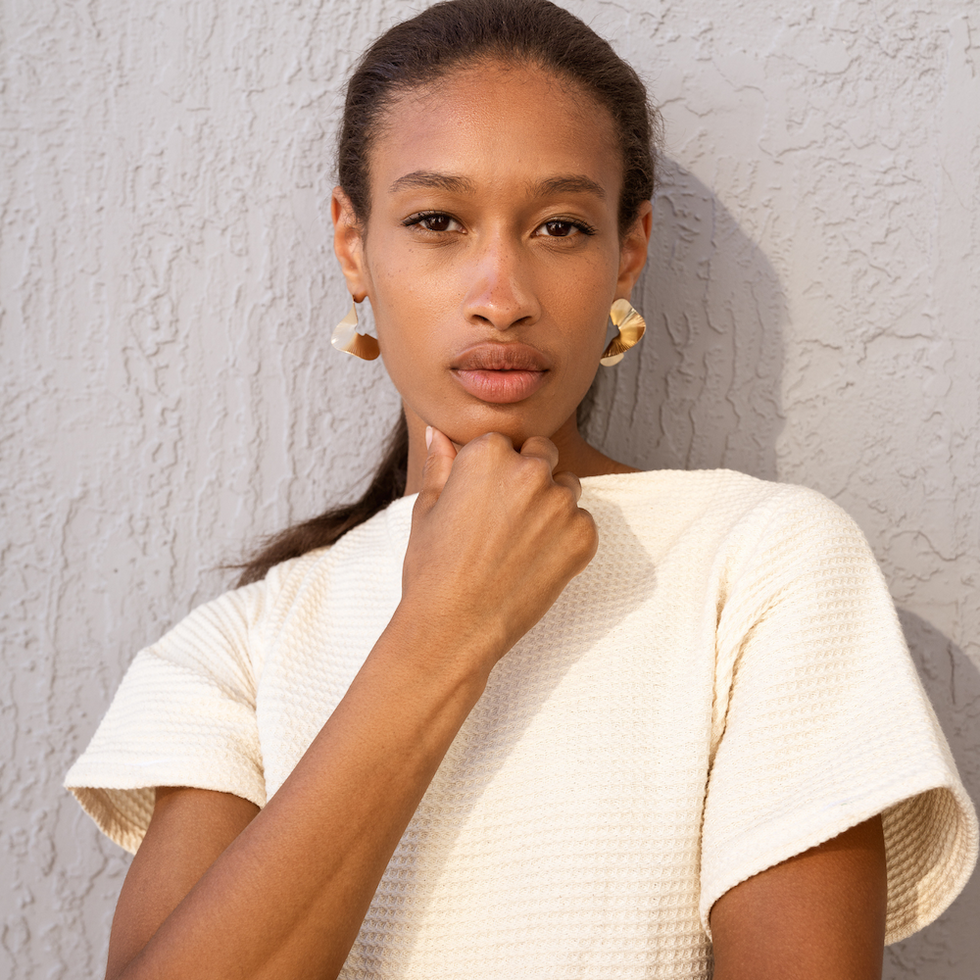Spotlight: Model Meron Mamo is Putting Ethiopian Clothing on the Map
We spoke with the model and fashion designer Meron Mamo about symbolizing and communicating Ethiopian vitality to the world.

In our 'Spotlight' series, we highlight the work of photographers, visual artists, multimedia artists, and more who are producing vibrant, original work.
In our latest piece, we spotlight Ethiopian model and fashion designer Meron Mamo and her brand Adey Abeba. On the runway, International model Mamo spent years wearing fine garments from global brands, only to crave the fabrics and styles she grew up with. Noticing the gap in Ethiopia’s representation in the fashion industry, Mamo launched Adey Abeba in 2020. Named after Ethiopia’s indigenous “New Year” flower, the heart of Adey Abeba lies in celebrating Africa’s heritage, domestic textiles, and the potential to create sustainable fashion houses on the continent. Made for the free-spirited and adventurous woman, the brand makes use of traditional textile techniques of hand-weaving and shemane to create unique and vibrant iterations of the Ethiopian styles Mamo longed to see. Each garment is made from pure Ethiopian cotton sourced from home, allowing luxury and sustainability to exist equally. Mamo works directly with local artisans, keeping a close relationship with community and her culture, as she is based in New York City.
We spoke with founder and creative director about promoting and celebrating African heritage on a global fashion stage.
Responses have been edited for length and clarity.
What was your first creation and how much have you grown since?
My initial creation for Adey Abeba was the Abyssinian dress—a geometric pattern dress that is commonly seen in Ethiopian traditional arts and symbolizes everlasting life. The Black Abyssinian dress is ankle-length with detailing splits on the side, perfect for a casual everyday look. It was a modest beginning, but since then, Adey Abeba has experienced remarkable growth. We have expanded our product line to include a diverse range of clothing and accessories, and have established a strong presence in both local and international markets. Our team has grown, and we have been able to create sustainable employment opportunities for local artisans. It has been an incredible journey of growth and learning.
What are the central themes in your work?
The core themes in my work revolve around celebrating African heritage and promoting sustainability. I draw inspiration from Ethiopia's rich cultural heritage and strive to incorporate traditional Ethiopian textiles, techniques, and motifs into modern, contemporary designs. Additionally, I am deeply committed to sustainability and ethical fashion, using locally sourced materials, supporting local artisans, and minimizing our environmental impact.
What would you do differently if you could start over, and why?
Looking back, I would have focused more on sharing my story with the press. While we prioritized building a strong customer community, we didn't emphasize press coverage as much. Press is crucial for building community and gaining exposure, so I would have included it in our strategy from the beginning. It's not about doing things differently, but rather adding more focus on press coverage.
What do you believe sets African designers apart from the rest of the world?
African designers bring a unique perspective to the fashion industry, drawing inspiration from our rich cultural heritage and diverse traditions. Our creations often feature vibrant colors, intricate patterns, and unique textures, setting us apart from the rest of the world. Additionally, African designers often prioritize sustainability, ethical fashion, and community empowerment, adding a distinctive social and environmental consciousness to our work.
Can you talk about your relationship with colors and accessories?
Colors and accessories play a significant role in my designs for Adey Abeba. I am inspired by the bold and vibrant colors that are often found in African textiles and traditional attire, and I strive to incorporate these colors into my designs in unique and creative ways. Accessories also hold importance in my designs, often integrating the design of accessories into the clothing itself. In the near future, we are excited to be adding more accessories to our line.
Where do you seek inspiration and how does it find you?
I seek inspiration from my Ethiopian heritage, the rich cultural traditions of Ethiopia, and the natural beauty of the country. I am constantly inspired by the diversity of African textiles, the craftsmanship of local artisans, and the stories behind traditional Ethiopian clothing. Inspiration often finds me through my travels within Ethiopia and around the world, interactions with local communities, and through research and exploration of traditional textiles and techniques. I also draw inspiration from global fashion trends, contemporary art, and nature, which I infuse into my designs to create a unique and modern aesthetic for Adey Abeba.
- 14 Ethical & Sustainable African Fashion Brands You Need To Know ›
- Pan-African Streetwear Label Finchitua Goes Intergalactic ›
- Spotlight: Ethiopian Brand Kunjina Is On a Fashion Metamorphosis ›






